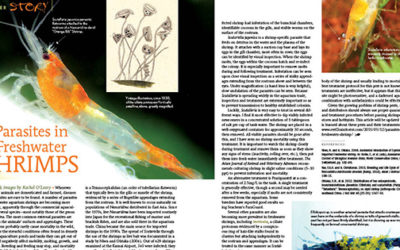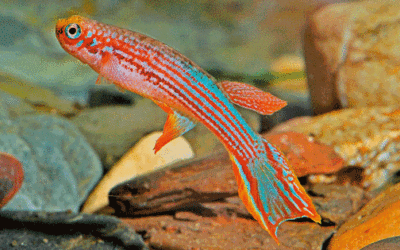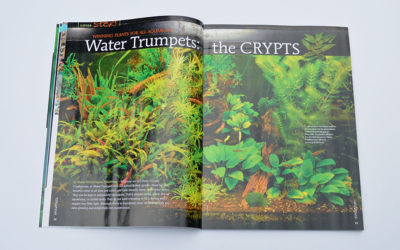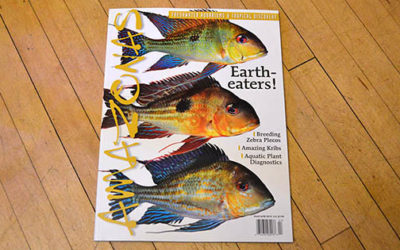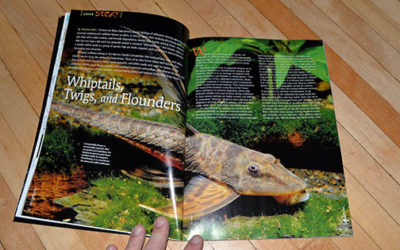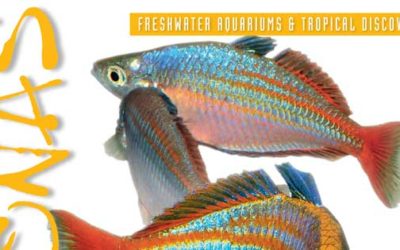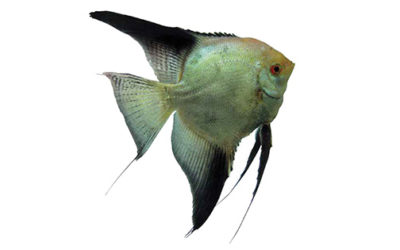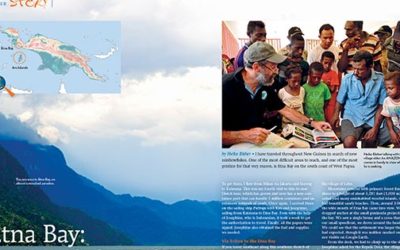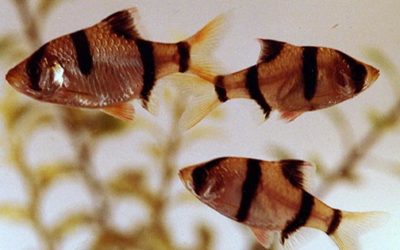Wherever plants or animals are domesticated and farmed, diseases and parasites are sure to be found. A number of parasites on freshwater aquarium shrimps are becoming more prevalent, apparently through the commercial aquaculture of several species—most notably those of the genus Neocaridina.
AMAZONAS Excerpt Articles
Mystery Species AMAZONAS 4.4
Can you identify these three species, which appear in Species Snapshots, AMAZONAS June/July 2015?
Forgotten Rasboras
This fish bears a misleading scientific name and an array of trade labels. The common English name “Blackline Rasbora” is a poor choice, as there are several black-lined Rasbora species. Better names would be “Red-Tailed Rasbora” or “Brilliant Rasbora.”
Crypts & Super Severums – AMAZONAS Print Preview
Beautiful and diverse Cryptocoryne plants and dazzling Severum cichlids lead the way into the the May/June 2015 issue of AMAZONAS Magazine, with additional features on New Rainbowfish, Zebra Otocinclus catfish, and Hans-Georg Evers leading an expedition to discover new Corydoras in quiet, shallow Peruvian streams.
Eartheaters – AMAZONAS Magazine March/April 2015 – Hard Copy Preview
Print copies of AMAZONAS are here! This is your very first look at what’s on the glossy, heavy, luscious pages of our newest issue! Is your mouth watering?
Whiptails – AMAZONAS Hard Copy Preview – Jan/Feb 2015
Fresh from the printer, the first issue of AMAZONAS Magazine for 2015 is here – take a peek inside!
AMAZONAS Magazine Table of Contents November/December 2014
NEW RAINBOWS: AMAZONAS Magazine Volume 3, Number 6
AMAZONAS Excerpt: The Next Big Angelfish Gene!
With the introduction of the Bulgarian Green gene to the United States, we take a look back at Matt Pedersen’s January 2013 coverage of this new form of Angelfish.
AMAZONAS Web Bonus Articles 2014
Here are the web-extra bonus articles from AMAZONAS Magazine for 2014.
The Tiger Barb Revisited
In the course of these investigations, we maintained and bred literally hundreds of Tiger Barbs (Puntius tetrazona). As anyone who has had the opportunity to observe large numbers of this species can attest, Tiger Barbs exhibit variation in the length of the second vertical band.

